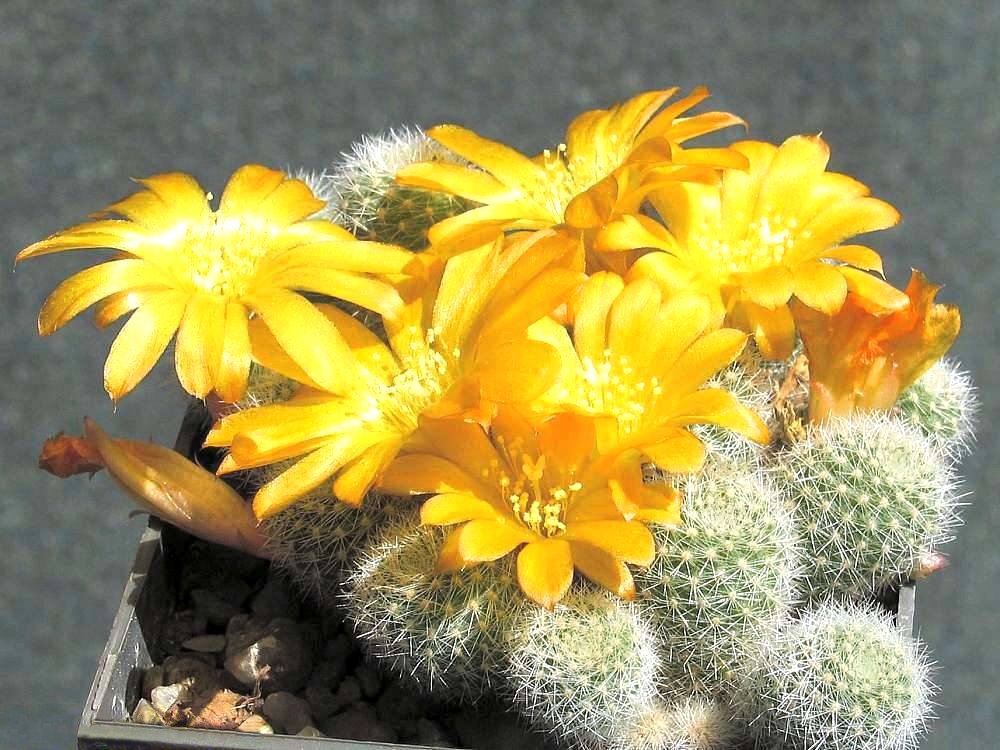|
Rebutia Fabrisii
''Rebutia fabrisii'' is a species of ''Rebutia'' found in Argentina. Description ''Rebutia fabrisii'' is a clustered cactus with globose stems that measure 1 to 2 centimeters in diameter and have fibrous roots. Its 15 spiral ribs are divided into humps, with almost circular areoles that range in color from white to yellow. The approximately 30 spines, which are 4 to 8 millimeters long, are difficult to distinguish as central or radial spines. The flowers are red, orange, or yellow, measuring up to 3 centimeters in length and diameter. File:仙人掌-子孫球屬 Rebutia fabrisii v aureiflora -新加坡濱海灣花園 Gardens by the Bay, Singapore- (24601154730).jpg, Plant File:Rebutia fabrisii 1.jpg, Orange flower form Distribution This species is commonly found in northern Argentina, specifically in the province of Jujuy San Salvador de Jujuy (), commonly known as Jujuy and locally often referred to as San Salvador, is the capital and largest city of Jujuy Province in northwes ... [...More Info...] [...Related Items...] OR: [Wikipedia] [Google] [Baidu] |
Rebutia
''Rebutia'' is a genus of flowering plants in the family Cactaceae, native to Bolivia and Argentina. The limits of the genus have varied widely, depending on whether genera such as ''Aylostera'' and ''Weingartia'' are included or treated separately. , Plants of the World Online accepted only three species of ''Rebutia''. A very large number of plants that have been treated in cultivation as species of ''Rebutia'' are now generally regarded as varieties, forms or synonyms of a much smaller number of species, or have been transferred to other genera. Plants treated as ''Rebutia'' are generally small, colorful cacti, globular in form, which freely produce flowers that are relatively large in relation to the body. They have no distinctive ribs, but do have regularly arranged small tubercles. They are considered fairly easy to grow and they may produce large quantities of seeds that germinate freely around the parent plant. Taxonomy The genus was designated in 1895 by Karl Moritz Schu ... [...More Info...] [...Related Items...] OR: [Wikipedia] [Google] [Baidu] |
Areole
In botany, areoles are small light- to dark-colored bumps on cactus, cacti out of which grow clusters of Thorns, spines, and prickles, spines. Areoles are important diagnostic features of cactus, cacti, and identify them as a family distinct from other succulent plants. Gordon Douglas Rowley, Gordon Rowley - What is an Areole The spines are not easily detachable, but on certain cacti, members of the subfamily Opuntioideae, smaller, detachable bristles, glochids, also grow out of the areoles and afford additional protection. Areoles represent highly specialized branches on cacti. They evolved as abortive branch buds while their spines evolved as vestigial leaves. In branched cacti, such as Opuntioidiae and the saguaro, new branches grow from areoles, because that is where the buds are. The development of the areole seems to have been an important element in the adaptation of cacti to niches in desert ecology. Some of the Opuntioideae have spines, as well as glochids, on their a ... [...More Info...] [...Related Items...] OR: [Wikipedia] [Google] [Baidu] |
Jujuy
San Salvador de Jujuy (), commonly known as Jujuy and locally often referred to as San Salvador, is the capital and largest city of Jujuy Province in northwest Argentina. Also, it is the seat of the Doctor Manuel Belgrano Department. It lies near the southern end of the Humahuaca Canyon where wooded hills meet the lowlands. Its population at the was 237,751 inhabitants. If its suburbs are included, this figure rises to around 300,000. The current mayor is Raúl Jorge. City information The city lies on National Route 9 that connects[...More Info...] [...Related Items...] OR: [Wikipedia] [Google] [Baidu] |
Humberto Antonio Fabris
Humberto is a Portuguese and Spanish masculine given name of Germanic origin. Notable people with this name include: A *Humberto Aguilar Coronado *Humberto Ak'ab'al * Humberto Albornoz * Humberto Alonso Morelli * Humberto Alonso Razo *Humberto Álvarez Machaín * Humberto Andrade Quezada *Humberto André Redes Filho * Humberto Anguiano * Humberto de Araújo Benevenuto * Humberto Arencibia *Humberto de Alencar Castelo Branco * Humberto Aspitia B * Humberto Ballesteros * Humberto Barbosa * Humberto Bedford *Humberto Benítez Treviño *Humberto Biazotti * Humberto Blasco * Humberto Brenes *Humberto Briceño *Humberto Briseño Sierra C *Humberto Calzada *Humberto de Campos *Humberto Carrillo *Humberto Castellanos *Humberto Castro *Humberto Cervantes Vega *Humberto Clayber *Humberto Coelho *Humberto Contreras * Humberto Costa * Humberto Costantini * Humberto Cota *Humberto Cruz * Humberto Curi D * Humberto De la Calle *Humberto Delgado * Humberto Domingo Mayans * Humberto Donoso * Humberto ... [...More Info...] [...Related Items...] OR: [Wikipedia] [Google] [Baidu] |
Cacti Of South America
A cactus (: cacti, cactuses, or less commonly, cactus) is a member of the plant family Cactaceae (), a family of the order Caryophyllales comprising about 127 genera with some 1,750 known species. The word ''cactus'' derives, through Latin, from the Ancient Greek word (''káktos''), a name originally used by Theophrastus for a spiny plant whose identity is now not certain. Cacti occur in a wide range of shapes and sizes. They are native to the Americas, ranging from Patagonia in the south to parts of western Canada in the north, with the exception of ''Rhipsalis baccifera'', which is also found in Africa and Sri Lanka. Cacti are adapted to live in very dry environments, including the Atacama Desert, one of the driest places on Earth. Because of this, cacti show many adaptations to conserve water. For example, almost all cacti are succulents, meaning they have thickened, fleshy parts adapted to store water. Unlike many other succulents, the stem is the only part of most cacti ... [...More Info...] [...Related Items...] OR: [Wikipedia] [Google] [Baidu] |

